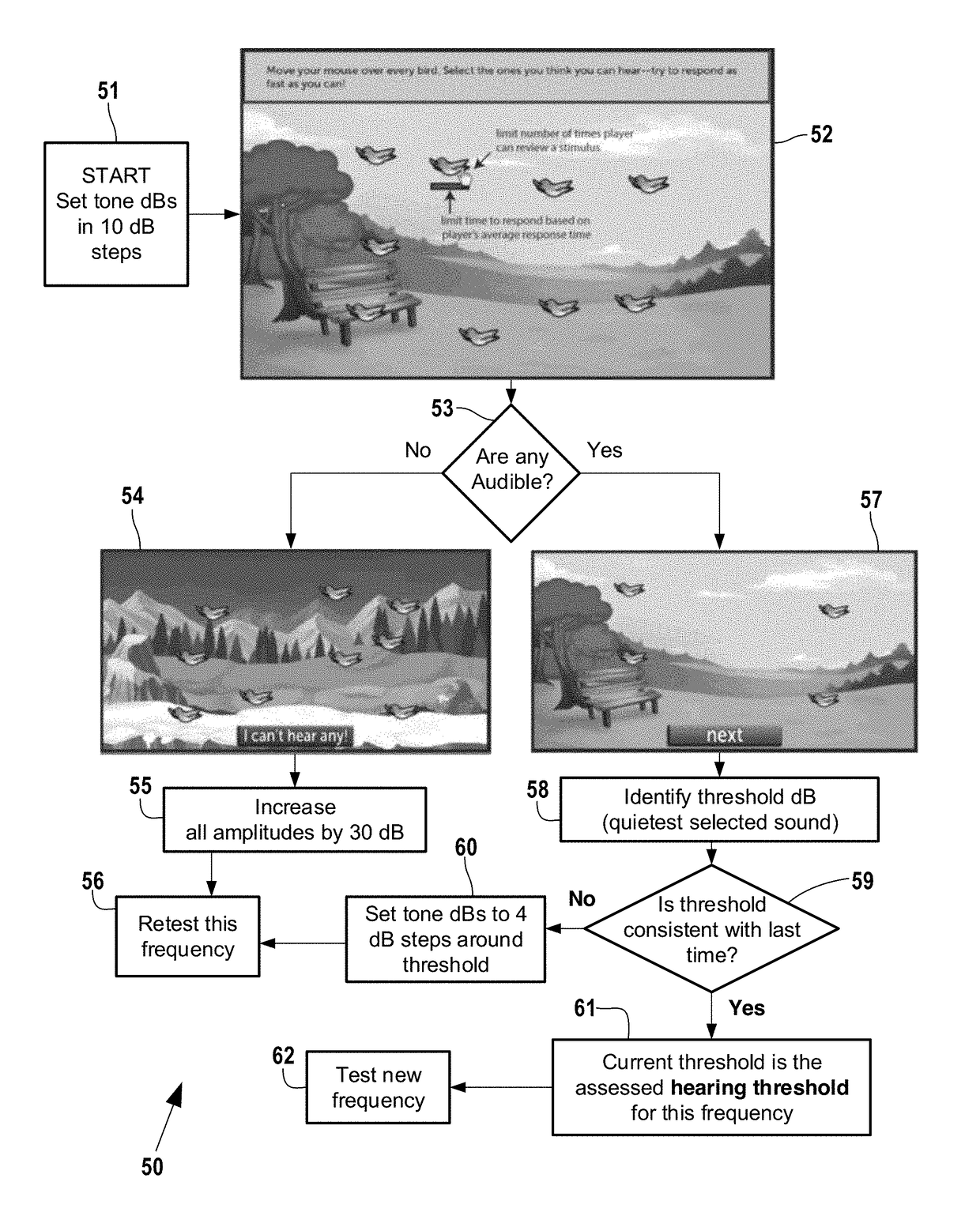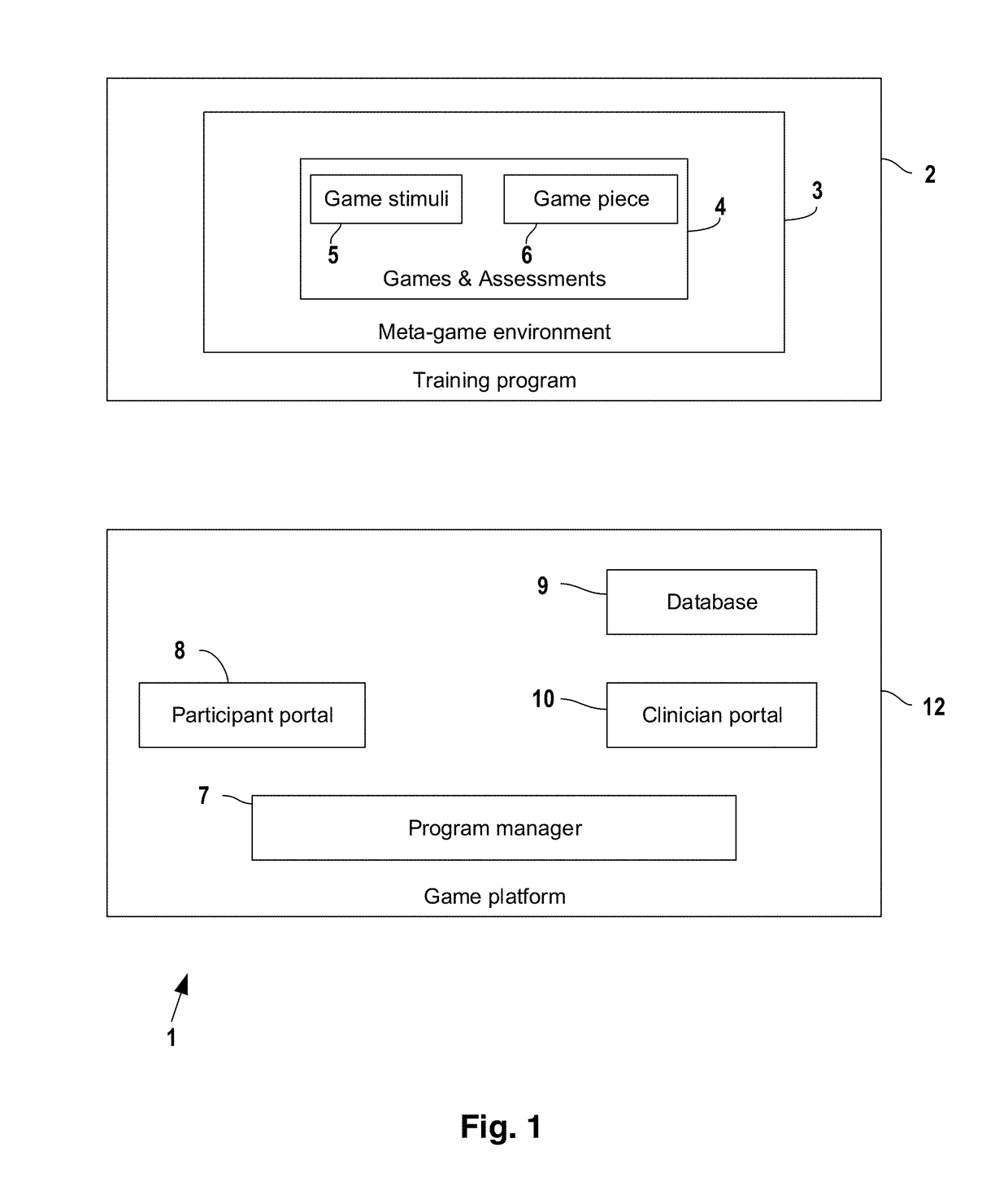Auditory perceptual systems
a perceptual system and auditory technology, applied in the field of hearing health, can solve the problems of impaired hearing, limited success of people fitted with hearing aids, and inability to seek clinical help for hearing loss or other hearing-related disorders, and achieve the effect of poor tuning and even more effective training
- Summary
- Abstract
- Description
- Claims
- Application Information
AI Technical Summary
Benefits of technology
Problems solved by technology
Method used
Image
Examples
Embodiment Construction
[0035]Various embodiments of the present invention use a computer system and a computer network for executing one or more cognitive training computer programs, where “cognition” refers to the speed, accuracy and reliability of processing of information, including filtering, recall, and manipulation of information, and attention and / or working memory.
[0036]A typical computer system (not shown) for use with the present invention will contain a computer, having a CPU, memory, hard disk, and various input and output devices. A display device, such as a monitor or digital display, provides visual prompting and feedback to the subject during execution of the computer program. Speakers or a pair of headphones or ear buds provide auditory prompting and feedback to the subject. A printer may be connected to the computer to enable a subject can print out reports associated with the computer program. Input devices such as a keyboard, mouse, trackpad, touch screen, microphone, camera, or other ...
PUM
 Login to View More
Login to View More Abstract
Description
Claims
Application Information
 Login to View More
Login to View More - R&D
- Intellectual Property
- Life Sciences
- Materials
- Tech Scout
- Unparalleled Data Quality
- Higher Quality Content
- 60% Fewer Hallucinations
Browse by: Latest US Patents, China's latest patents, Technical Efficacy Thesaurus, Application Domain, Technology Topic, Popular Technical Reports.
© 2025 PatSnap. All rights reserved.Legal|Privacy policy|Modern Slavery Act Transparency Statement|Sitemap|About US| Contact US: help@patsnap.com



